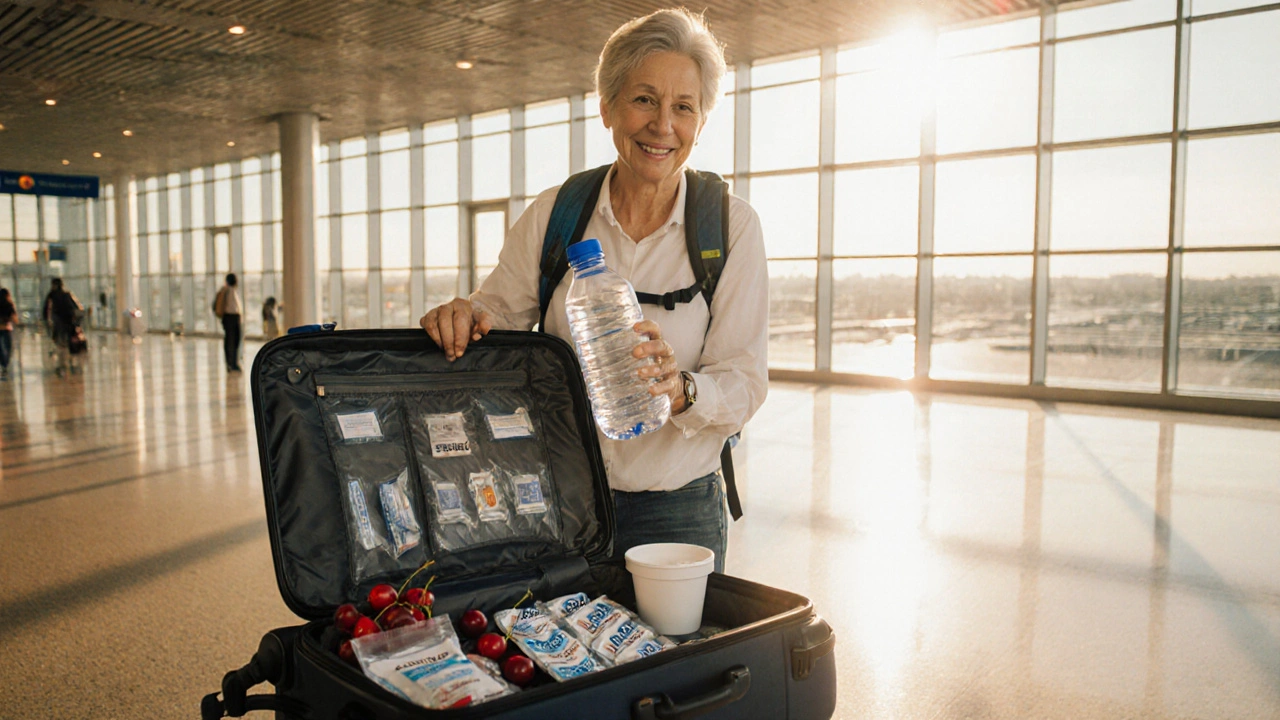Gout Travel Tips
When dealing with gout, a type of arthritis caused by uric acid crystals forming in joints, the idea of packing a suitcase can spark anxiety. Travel, moving between places for work or leisure often changes your routine, food choices, and fluid intake, all of which can trigger a flare‑up. Understanding that gout travel tips are about balancing lifestyle habits with medical needs helps you keep pain at bay. For example, the semantic triple "gout involves uric acid buildup" connects directly to "dehydration raises uric acid levels" – a fact that makes staying hydrated a top priority on any trip. Likewise, "travel can trigger gout flare‑ups" highlights the need for proactive planning, while "medication adherence is crucial during travel" reinforces that you shouldn’t skip doses just because you’re on the go.
Hydration, Diet, and Medications – Your Travel Trio
First, dehydration, the loss of body fluids that concentrates uric acid is the silent driver of many travel‑related gout attacks. Air‑conditioned cabins, long drives, and limited access to water make it easy to fall behind on fluids. Aim for at least eight glasses a day, and keep a reusable bottle handy to sip regularly, especially after meals high in purines. Next, diet, the foods you eat that influence uric acid production can either fuel or soothe gout. While enjoying local cuisine is part of the adventure, steer clear of excessive red meat, shellfish, and sugary drinks. Opt for low‑purine choices like fresh vegetables, fruit, and whole grains. Pair those meals with a protein source that's gentle on uric acid, such as tofu or legumes. Finally, never overlook your medication, prescribed drugs that lower uric acid or reduce inflammation. Pack enough pills for the whole trip plus a few extra days in case of delays, and store them in a carry‑on where temperature changes won’t affect potency.
Beyond the basics, practical actions can make a huge difference. Schedule any necessary blood tests before you leave so you know your current uric acid level; this data helps you and your doctor tweak dosage if needed. When you book flights or hotels, request a room with a mini‑fridge to keep water or low‑purine snacks cool. If you’re on a long bus ride, ask the driver for regular stops so you can stretch and drink. Some travelers find that keeping a simple checklist – "water bottle, meds, low‑purine snacks, emergency contact info" – cuts stress and prevents missed doses. Remember that altitude can also affect uric acid metabolism, so if you’re heading to high‑elevation destinations, increase fluid intake and monitor symptoms closely.
Armed with these strategies, you’ll find that traveling with gout doesn’t have to mean constant worry. The articles below dive deeper into each of these topics, from detailed medication guides to region‑specific diet tips, giving you a toolbox of real‑world solutions. Explore the collection to fine‑tune your plan, and enjoy your next adventure without the shadow of a painful flare‑up.
Learn practical gout travel tips to stay pain‑free on vacation: hydration, diet, medication timing, footwear, and emergency planning for a smooth, flare‑free trip.



